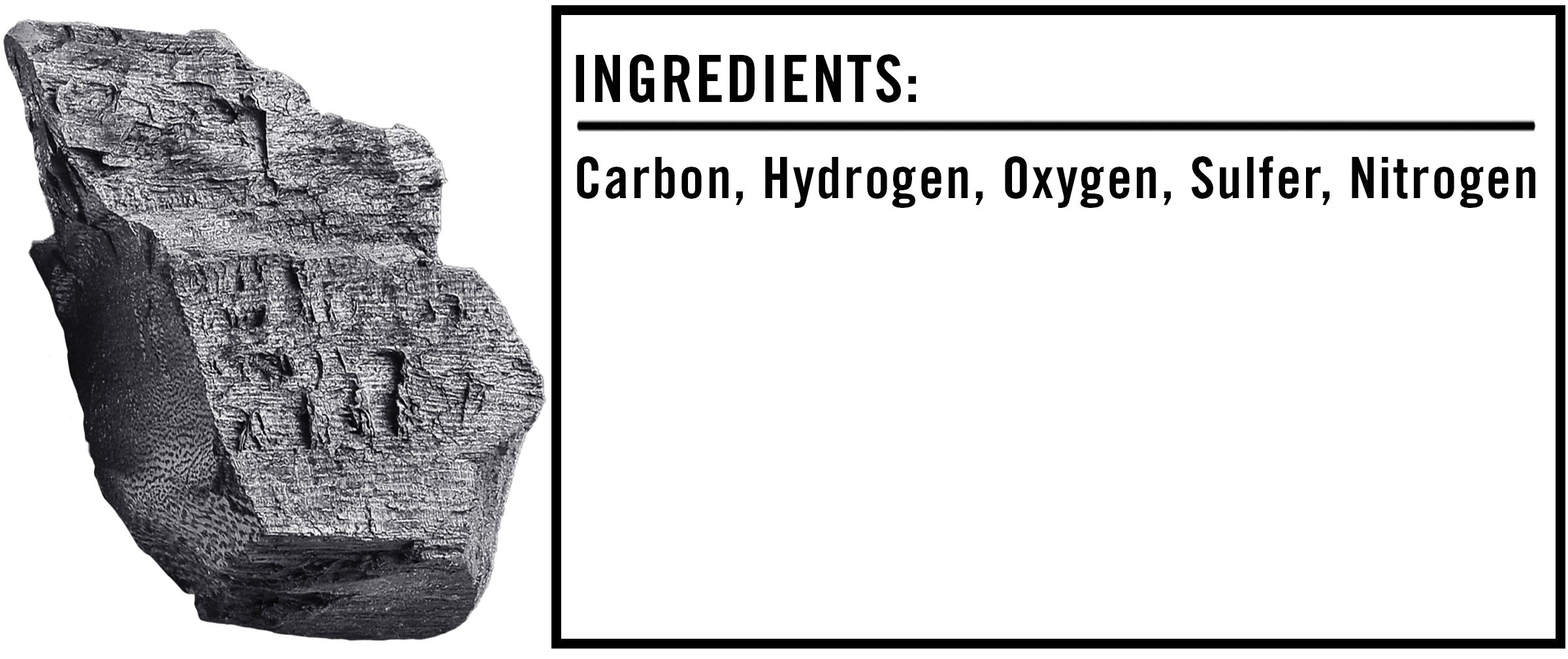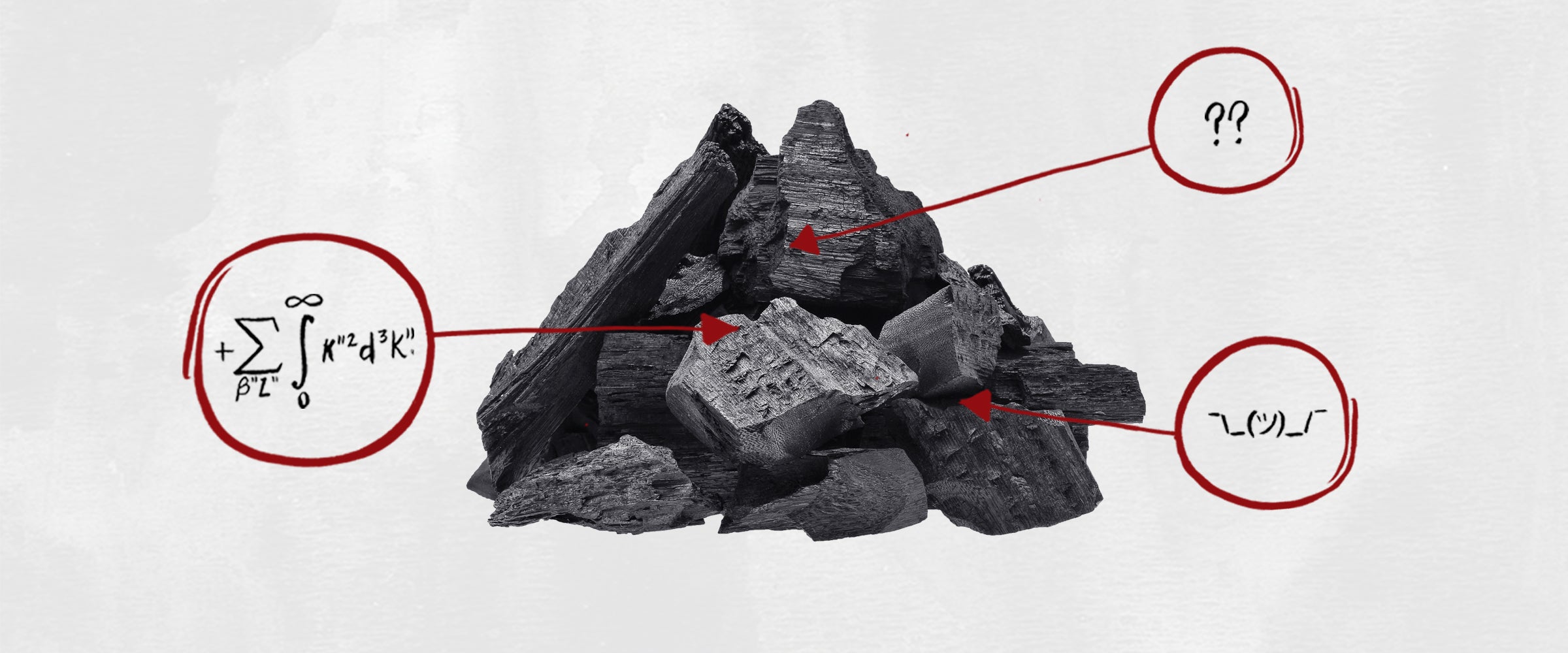We’re often told that you should never eat anything (or put anything on your body) if you don’t recognize everything on the ingredients list. But since most of us have no idea what xanthan gum or potassium benzoate are — or more importantly, what they’re doing to our bodies — we’re decoding the ingredients in the many things Americans put in (and on, or near) themselves.
This edition: Coal, the components of which have been examined in detail down below. Since some of you have been particularly naughty this year, some of your stockings are surely stuffed with somber lumps of coal, but interestingly enough, only recently has coal become a gift given to the naughtiest of naughty. Some of the earliest Christmas stories, written around the early 19th century, depict stones, branches and even cold potatoes — basically, anything easy to come by — as common gag presents for mischievous children. As late as the end of that century, coal was still portrayed by some tales as a reasonable gift, readily accepted by adults who desired a warmer winter home. It was only in the 20th century, when coal was common and plentiful, that it took on the association it has today.
Nowadays, of course, coal has a more nefarious reputation, too, as power plants fueled by these darkened lumps choke the atmosphere and do their part in the seemingly inevitable heat destruction of the planet. So if you get the gift of coal this year, rather than pouting about your lack of decent gifts, use it as a reminder to go outside and pick up some trash or whatever.
Christmas traditions and our polluted environment aside, here are the ingredients that makeup these flammable black hunks, as per this scientific breakdown.

The Ingredients
1) Carbon: Coal is almost entirely carbon, a flammable chemical element with an extremely high burning temperature, hence why coal has long been used for cooking and heating. Unfortunately, as we mentioned earlier, when the carbon in coal combusts, it produces carbon monoxide, carbon dioxide — two emissions that contribute greatly to climate change — and more heat to fuel the reaction, which is why coal fires burn for long periods of time.
2) Hydrogen: The most abundant element in the universe, hydrogen, unlike carbon, is a promising source of clean fuel, since it produces only water when consumed in a fuel cell, a complex device that converts the chemical energy of certain fuels into electricity. That said, the infrastructure needed to use hydrogen as a reliable fuel source is still lacking throughout most of the world, so we have a long way to go before we could actually swap out carbon for hydrogen, potentially saving us all from driving off a cliff (a metaphorical one, obviously — the rising sea levels will pretty much take care of all the actual cliffs).
3) Oxygen: Oxygen, as you hopefully know, helps humans breathe, and in the case of coal, the small amount of oxygen present is necessary for reacting with the carbon to fuel fires.
4) Sulfur: Compared to the three other elements that we already discussed, the chemical element sulfur is found in relatively small amounts in coal. Best known for smelling like rotten eggs, breathing in sulfur dust can irritate the airways and cause coughing, so maybe avoid huffing coal. Likewise, when the sulfur in coal burns, it produces sulfur dioxide, which again, can fuck your lungs.
5) Nitrogen: Similar to sulfur, nitrogen is found in minuscule amounts in coal and is relatively inert. Again, though, when nitrogen is burned, it becomes nitrogen dioxide, an air pollutant that can seriously mess up your lungs, potentially resulting in asthma and chronic lung disease. Did we already mention that our coal-fueled planet is a ticking time bomb?
The Takeaway
As you surely already know, burning coal is terrible for the environment, and thus, everyone and everything that relies on it (hint: that’s all the things!). Sadly, because we built a world that runs on coal — and because, as with most worldly problems, a lot of very rich and powerful people profit from it — even as more and more renewable sources of energy come to fruition, our communal addiction to coal fails to falter.
So, as the world burns around us, if you get a sad lump of coal in your stocking this Christmas, just be glad to have kept it out of the fires in a power plant, where your gag gift would have otherwise become just another wisp in the thick plume of environmental degradation.
Merry Christmas, assholes!

